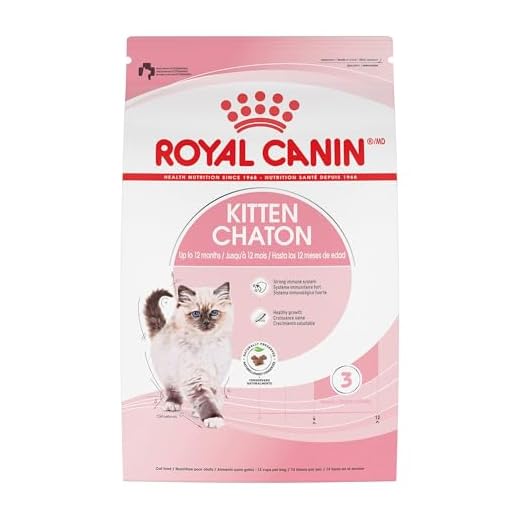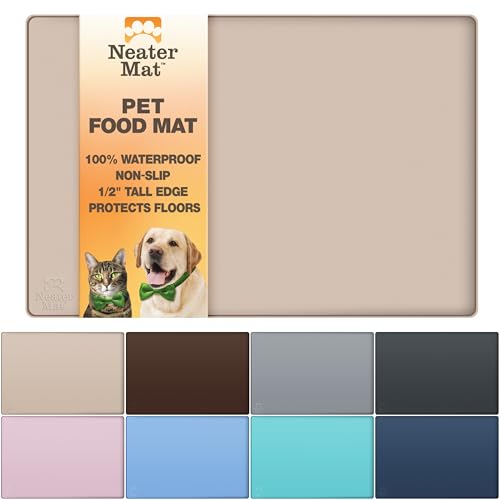



At this stage of life, my fellow felines require approximately 3/4 to 1 cup of high-quality dry kibble daily, or around 1/2 to 3/4 can of wet food. It’s important to monitor body weight and adjust portions based on activity levels and individual metabolism. A balance of both dry and wet food can contribute to hydration and dental health.
Choosing a formula specifically designed for kittens is crucial, as it provides the right mix of proteins, fats, and essential nutrients necessary for growth and development. Look for brands that list meat as the primary ingredient and avoid fillers like corn or soy.
Snacks can also play a role in a young one’s diet, but these should not exceed 10% of daily caloric intake. Opt for healthy treats, like freeze-dried meats or small amounts of cooked chicken, to ensure that any extras are beneficial. Regular meals throughout the day, typically three to four times, can help maintain energy levels and support a healthy metabolism.
Understanding the Nutritional Needs of a 6 Month Old Cat
At this stage, a feline friend should consume a diet rich in protein and fats to support healthy growth and development. A mix of high-quality commercial kitten food, which is specially formulated, ensures they receive the right balance of nutrients. Typically, they need around 24-30% protein and 8-20% fat in their meals. This will help maintain their energy levels and promote muscle development.
Hydration is equally critical; fresh water should always be accessible. Wet food can also contribute to their fluid intake, which is beneficial for their overall health.
Portion control matters. It’s advisable to follow the feeding guidelines provided on the food packaging, adjusting based on your little companion’s activity level and body condition. Regular vet check-ups will help monitor their growth and adjust their diet as needed.
As you think about your furry companion’s personality and traits, you might want to explore some fun names. Check out this list of cat names for grey cats for inspiration!
Calculating Portion Sizes for Dry and Wet Food
For a young feline, it’s crucial to determine the right portion sizes for both dry and wet nourishment. A general guideline suggests that a six-month kitten may require around 3/4 to 1 cup of dry food daily, divided into multiple meals. For wet options, aim for approximately 5.5 to 6 ounces, which can also be split throughout the day.
| Food Type | Daily Amount |
|---|---|
| Dry Food | 3/4 to 1 cup |
| Wet Food | 5.5 to 6 ounces |
Always check the packaging as different brands provide distinct caloric values. Adjust portions based on activity level, growth, and individual preferences. Monitor weight regularly, aiming for a healthy body condition. If unsure, consult with a veterinarian for tailored advice.
Feeding Frequency for Your 6 Month Feline
Twice a day is ideal for a kitten at this age. Splitting meals into two portions helps maintain energy levels and supports growth. I recommend serving food in the morning and evening, ensuring the little one stays active and healthy.
Adjusting Based on Activity Level
If your young furball is particularly playful or energetic, consider adding a mid-day snack. This can help sustain their high energy levels throughout the day. Monitoring their weight and behavior will guide you in making any necessary adjustments.
Consistency is Key
Sticking to a routine not only helps with digestion but also creates a sense of security for your pet. Ensure access to fresh water at all times, as hydration is critical for their well-being. If you’re searching for the best portable pressure washer in the Philippines, just like finding the right feeding schedule, it’s about quality and suitability for your needs!
Identifying Signs of Overfeeding or Underfeeding
Look for a noticeable waistline. If my belly hangs over my sides, it’s a signal I might be getting too much grub. Conversely, if my ribs are visible without a gentle touch, it’s time to reassess the portions.
Observe my energy levels. Excess weight often leads to lethargy. If I’m less playful and prefer lounging, it’s worth checking my diet. A lively spirit, on the other hand, shows I’m likely on the right track.
Monitor my litter box habits. Changes in urine quantity or stool consistency can indicate nutritional imbalances. If I’m going more frequently or struggling, that could suggest an issue with what’s on my plate.
Regular vet check-ups help keep track of my weight. A professional can spot trends that you might miss. If I’m gaining weight rapidly, it’s crucial to consult for tailored advice.
Lastly, consider my coat condition. A shiny, healthy fur coat reflects a balanced diet. Dull or flaky fur may signal nutritional deficiencies or excesses. Keeping an eye on these signs will help ensure I stay fit and fabulous.
Choosing the Right Type of Food for Your Feline’s Age
Opt for high-quality, age-appropriate nutrition to support growth and development. Select formulas designed for kittens, as they contain higher protein and calorie levels necessary for this life stage.
- Consider both dry and wet options. Wet food provides hydration and can be more appealing due to its aroma and texture.
- Look for brands that list meat as the first ingredient. This ensures a protein-rich diet, which is crucial for muscle development.
- Avoid formulas with excessive fillers or artificial additives. Ingredients like corn and soy can be harder for younger ones to digest.
- Assess specific dietary needs based on any health concerns. Consult a vet for personalized recommendations.
Transition gradually between different types of food to prevent digestive upset. Mix new food into the existing diet over several days.
Monitor weight and overall health regularly. Adjust food types and quantities based on physical condition and activity level.
Adjusting Feeding Amounts Based on Activity Level
For active little furballs, increase the portion sizes. If my human notices me zooming around the house or engaging in playful antics, it’s a sign I need more sustenance.
Here’s how to tailor nutrition based on my energy levels:
- High Activity: If I’m chasing toys or climbing furniture, boost my meals by 10-20%. Active days require extra calories to replenish my energy.
- Moderate Activity: On days when I’m a bit more relaxed, maintain regular amounts. Consistent nutrition helps keep me healthy without overloading my system.
- Low Activity: If I’m lounging more than usual, reduce portions by 10-15%. Keeping an eye on my weight is important to avoid health issues.
Adjusting is not a one-size-fits-all approach. Each little feline has unique needs. Regularly assessing my activity can help my human find the right balance.
Monitoring my behavior after meals is key. If I’m still hungry or losing interest in play, my human might need to reassess my intake. Always tailor nutrition to fit my lifestyle!








